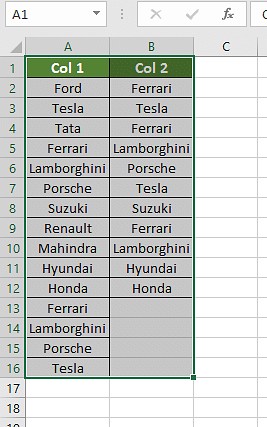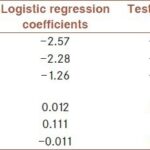Finding duplicate entries in large Excel spreadsheets can be a tedious task. Fortunately, Excel offers several powerful features to quickly and accurately compare two columns for duplicates. This article will guide you through various techniques, from simple comparison operators to advanced functions, empowering you to identify duplicate data efficiently.
Methods for Comparing Excel Columns for Duplicates
Several methods exist for comparing two Excel columns to find duplicates. Each approach caters to different needs and levels of complexity. Here’s a breakdown of the most effective techniques:
1. Conditional Formatting
Conditional formatting allows you to visually highlight duplicate values.
- Steps:
- Select the two columns you want to compare.
- Go to Home > Conditional Formatting > Highlight Cells Rules > Duplicate Values.
- Choose a formatting style to highlight duplicates.
This method quickly identifies duplicates but doesn’t provide a separate list of them. It’s ideal for a visual overview.
2. Equals Operator (=)
This is a straightforward method using a formula to compare cells directly.
- Steps:
- Create a new column for results.
- In the first cell of the new column, enter a formula like
=IF(A1=B1,"Match","No Match"). This compares cells A1 and B1. - Drag the formula down to apply it to all rows.
This provides a clear “Match” or “No Match” result for each row.
3. VLOOKUP Function
VLOOKUP searches for a value in the first column of a range and returns a value in the same row from a specified column.
- Steps:
- Create a new column for results.
- Enter a formula like
=IFERROR(VLOOKUP(A1,B:B,1,FALSE),"No Match"). This searches for the value of A1 in column B. - Drag the formula down.
VLOOKUP is powerful for finding matches even if the columns are not adjacent. Using IFERROR handles instances where a value is not found. For partial matches, use wildcards () within the VLOOKUP formula. For example `=VLOOKUP(““&A1&”*”,B:B,1,FALSE)`
4. EXACT Function
EXACT is case-sensitive and compares two text strings. It returns TRUE if they are identical, and FALSE otherwise.
- Steps:
- Create a new column for results.
- Enter a formula like
=EXACT(A1,B1). - Drag the formula down.
This method is useful when case sensitivity is crucial. Remember, “apple” and “Apple” would be considered different.
Choosing the Right Method
- Visual identification: Conditional Formatting
- Simple comparison: Equals Operator
- Matching across non-adjacent columns: VLOOKUP
- Case-sensitive comparison: EXACT
Conclusion
Excel provides a versatile toolkit for comparing two columns for duplicates. By understanding these methods, you can efficiently identify and manage duplicate data, improving data accuracy and streamlining your workflow. Select the method that best suits your specific needs and data structure.

